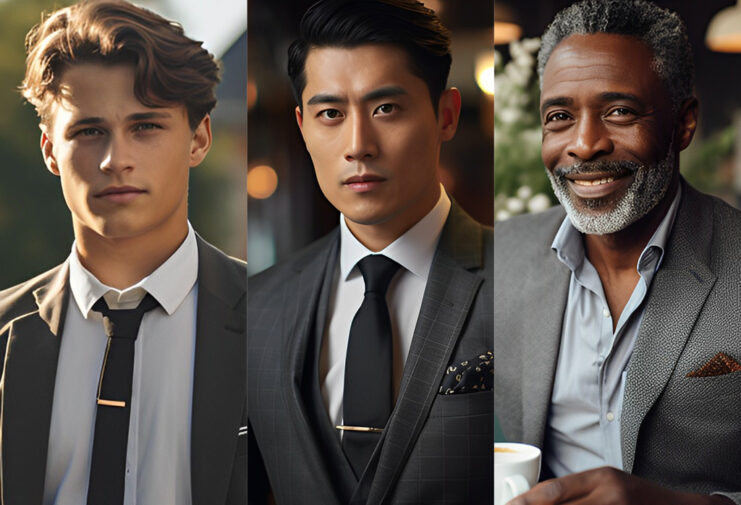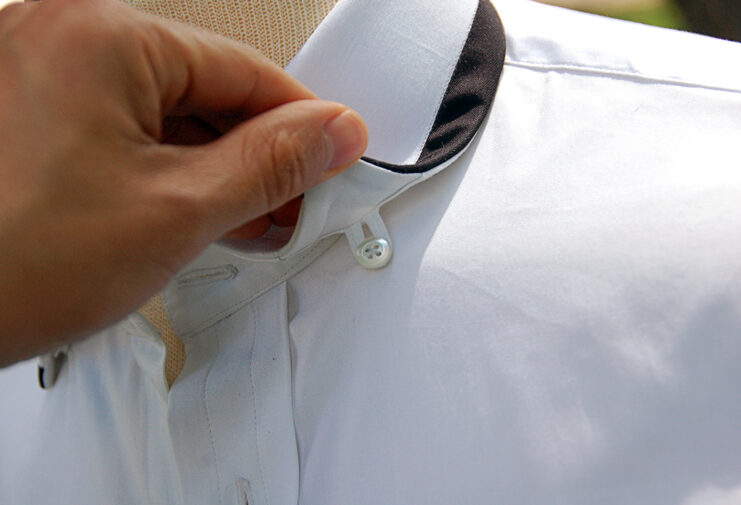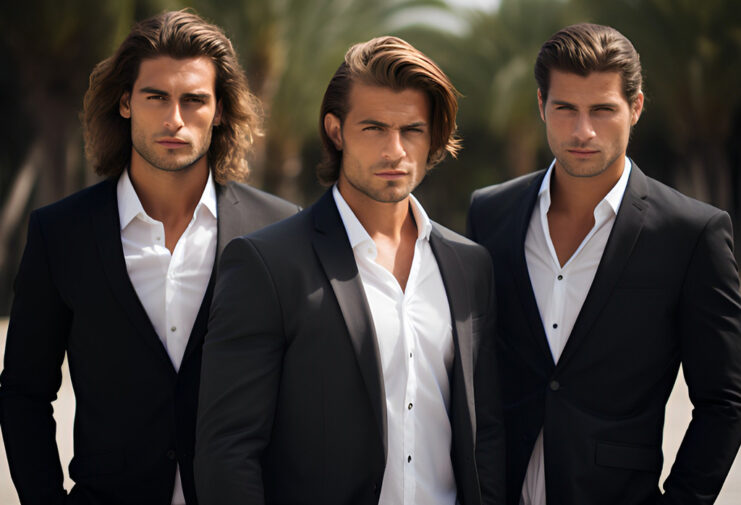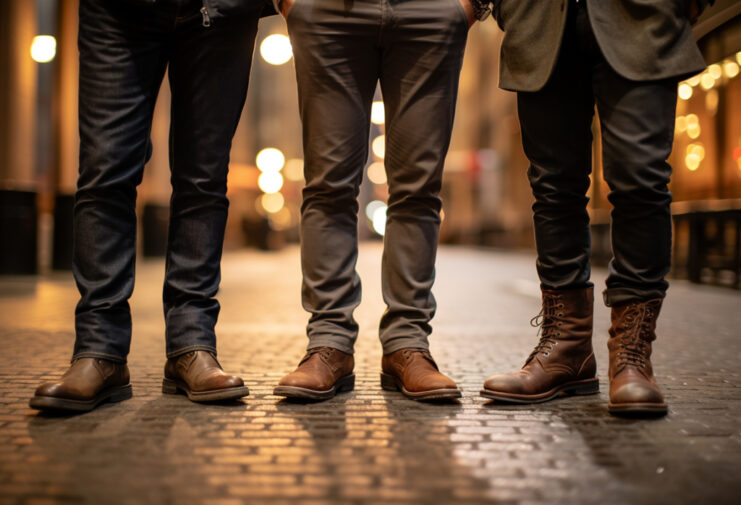The Styles of AMC's Mad Men – Menswear of the 1960s
Who ever thought the 1960s would be so cool?
There's more going on than a simple “man in the gray flannel suit” look, however…join us in a series of articles taking an in-depth look at each of the Mad Men's personal style!
With the success of AMC's “Mad Men,” tight-fitted gray suits and crisp spread collars are suddenly getting a second look.
There's one icon of the Mad Men style that stands above the rest, and it's Don Draper. With the most screen time, the most outfits, and the most exposed private life, he's the man to look to for costumer Janie Byrant's best showpieces.
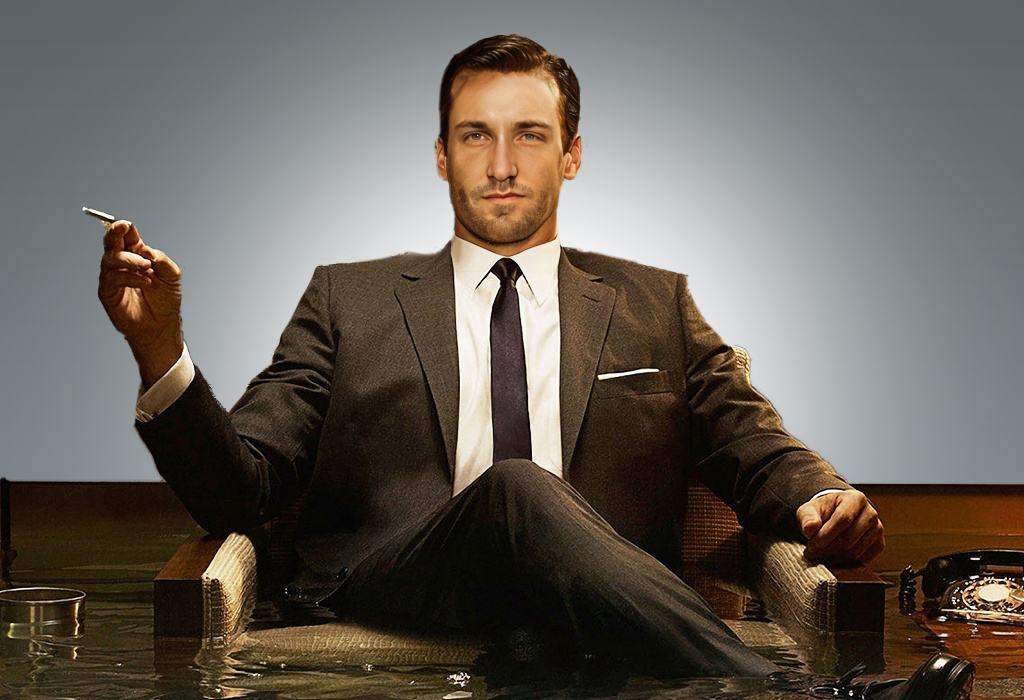
Because the show takes a more detailed look at his “off-hours,” he's also the best example of casual, non-business wear for men in the show, sporting outfits like plaid flannels and navy polo shirts as well as his classic suits.
Don Draper at Work
In the office, Don Draper is the go-to creative man. He's the one the rest of the firm can count on for inspiration and last-minute results.
He's also in a position of responsibility and on an upward track, and his clothing reflects the balance between the creative artist and the career man — his look is varied and visually “busy” for a suit-and-tie man, but it's impeccably fit and well within the boundaries of appropriate business wear in the early 1960s.
The Classic Men's Suit
The staple of Don Draper's wardrobe is the classic American suit, popularized in the 1950s and 1960s by companies like Ralph Lauren and Brooks Brothers: soft and thick in the shoulders and chest, but tapered at the waist to give a more V-shaped silhouette.
He wears his coats cut a touch long at the bottom, probably because actor Jon Hamm stands six foot tall — the added length helps add the illusion of length to his upper body, balancing it with his longer legs.
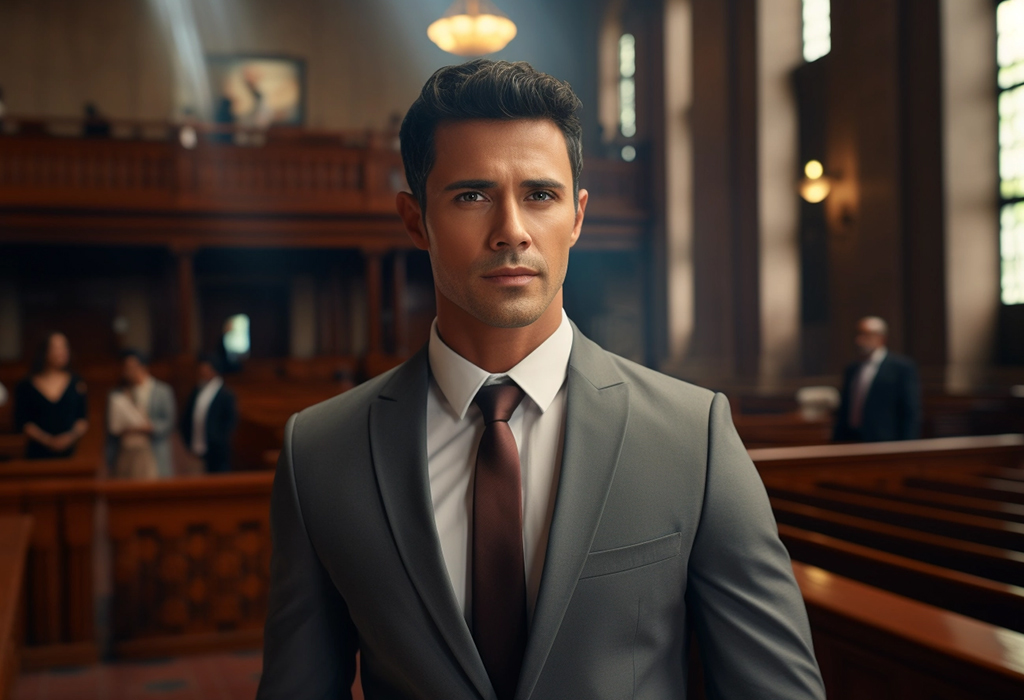
His lapels are notched and on the slimmer side, a very characteristic look for Madison Avenue of the early 1960s. The overall natural shape of the suit makes it aggressively “masculine,” emphasizing the shoulders with a soft drape over them and the chest with a clean V-shape in the front.
Since most of the men in Sterling Cooper wear some version of the classic American suit, Don Draper's wardrobe primarily expresses his individuality (and sets the star of the show apart from the crowd) with textured weaves and patterned colors. Outside of a few formal-wear outfits, Draper almost never wears a solid-colored jacket or trousers.
The colors of his suits are usually made from threads of multiple colors that blend to give the impression of a single dominant color. Many are explicitly patterned, though the patterns are always small and understated — in the business world of the 1960s, any overt pattern outside of the classic pinstripe would usually be considered too casual for work.

Pocket Squares
Like any well-dressed man, Don Draper is almost never seen in a suit coat without a pocket square to decorate it. He keeps it simple: a plain white band of linen adorns his pockets, folded cleanly horizontal in nearly every scene.
The uniform approach helps the audience understand that the pocket square is almost an unconscious touch for the character — something he knows is a fundamental of a good-looking man, rather than an ostentatious flourish. It's very business-like and very self-confident.
White Dress Shirts the Mad Men Way
One thing that may strike most modern viewers is that Draper & Co. are remarkably unvaried in their dress shirt selection. A single color dominates: white.
The blue pinpoint shirt of business-casual fame had yet to make it into the business etiquette in the Mad Men years — those garments were still “blue collar,” inappropriate for a corporate environment like Sterling Cooper.

Still, we see some variation in Don Draper's dress shirts. His “white” linen darkens in some of his more relaxed outfits, becoming almost a cream color instead, and the point collars are worn looser and less firmly pressed. At his most sharply-dressed, he wears very bleached white shirts with stiffly starched collars.
In both cases, however, Draper is observing the most symmetrical of collar styles for a dress shirt: he wears a plain point collar that spreads just wide enough for the tips of each side to touch the lapels of his suit. Since he also favors straight ties, this creates a very deliberate, upward-pointing arrow effect on the front of his body, guiding the viewer's eye directly to his face — not a bad strategy if you look like Jon Hamm.
Most of Don Draper's ties are a single color with a textured fabric, or else feature diagonal stripes in colors that compliment his suit — he rarely wears anything with an overstated pattern, or in very bright colors. Because the rest of the Sterling Cooper staff favors more boldly-patterned ties, this helps Draper come across as the least image-conscious and most naturally-dressed man in group shots.
As the series progresses, he also begins to add tie pins, using a dash of metal to draw the eye the same way that a brightly-colored fabric would — but much more fashionably.
A look at Don Draper's cuffs shows another stylistic edge: he frequently wears French cuffs, and is careful to let a half-inch or so of shirt cuff show beyond the ends of his suits. His cufflinks are very small and understated, so this isn't a flashy gesture — it's just a detail that sets him apart from his fellow ad men.
Hats in Mad Men
Mad Men is set in “the days when men wore hats,” and what we see of Draper's outerwear is very period. He wears several different fedoras, all of them made from good felt and shaped to a similar peak. Since Jon Hamm's face is solid and straight-sided, he tops it off with a tapered crown that keeps him from turning his head into an rectangle. The shape of the hat mirrors the shape of his chin, giving him a very completed effect.
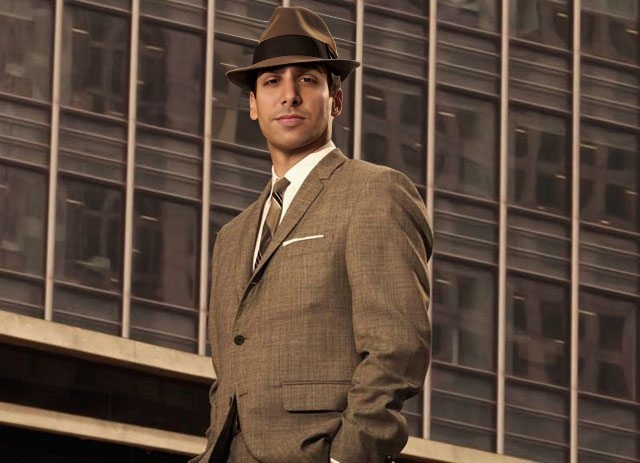
Mad Men Overcoats and Outerwear
We also see a few different coats on Draper throughout the show, including a notched-lapel camelhair and a high-collared tan trench coat. When he wears a coat, it is always a distinctly different color from his suit coat.
The cuffs of the sleeves are long enough to cover his shirt cuffs when the coat hangs naturally, but show the fabric underneath when he lifts his arm.
Don Draper's Shoes
Due to the camera angles, we don't actually see much of Don Draper's footwear in Mad Men. When we do, he's impeccable: well-shined black Oxfords with a smooth toe. He also wears a fairly thick heel — since Jon Hamm is already a tall man, it's safe to assume that the costuming is meant to help him stand out even more as the eye-catching man in group shots.
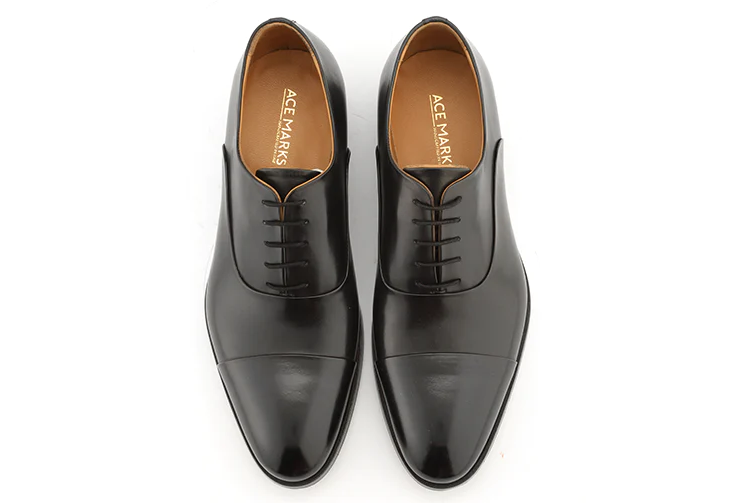
Updating Don Draper's Mad Men Style
Overall, it's safe to say that Don Draper is a well-dressed man. He looks sharp, knows how to dress for the occasion, and enjoys the flexibility of menswear — in scenes at home, we often see him continuing about the house in his work trousers and dress shirt with the sleeves rolled up, sometimes with a sweater added to replace the suit jacket.
But Mad Men is a period piece, and a few of Don Draper's fashion choices are either dated or the result of a production necessity rather than the character's personal style. Men dressing to match the sharp Mad Men look should know what to update from Draper's usually impeccable outfits
The most important thing to notice about Draper's suits is that they are almost all single-vented. This means that there's a single slit up the bottom of the back, centered in the middle of his back.

This is part of the classic American look that was evolving at the time Mad Men is set, and sets Draper's suits apart from what were considered “English” and “European” or “Italian” styles in the 1960s, but these days the single vent is generally recognized as the least-flattering option for men's jackets. Because the vent only allows the cloth of the suit to spread outward, the sides of the suit bunch up any time Don puts his hands in his pockets.
Of course, it may have been production necessity as much as a desire to keep the classic American look — single-vented suits are cheaper and easier to produce than double-vented (one of the reasons they are the most common option available in today's stores), and Mad Men may well have only been able to outfit Don in single-vented jackets at first.
Draper does appear wearing double-vented suits in later seasons, indicating either an improvement in the studio budget or the character's expanding wardrobe as his position in the firm rises.
Draper is also a little less adventurous than some of his fellow Mad Men, which is both a good thing and a bad thing. His style is very consistent, and therefore very self-confident — the clothes of a man who knows what he wants and what looks good on him.
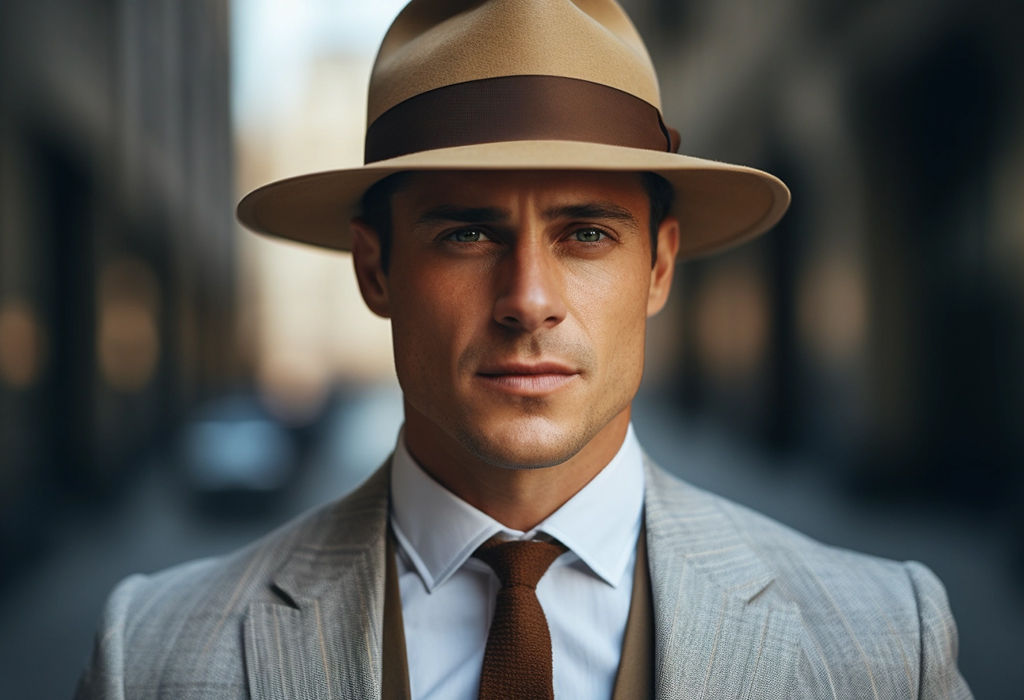
At the same time, his dedication to the single-breasted, two-button jacket with notched collars keeps him from enjoying the extra flash that Sterling's double-breasted suits or sweeping point lapels occasionally sport. He's one of the best-dressed Mad Men, but he's also one of the least adventurous.
Taken in whole, though, Don Draper is the man's man of the series hands-down. He wears extremely well-fitted clothing with confidence, uses color and pattern to great effect, and stands out in a crowd without ever pressing the limits of acceptable workplace attire.
His accents — cufflinks, hats, etc. — are impeccable and understated. And since he's an attractive man, he sticks to the most important rule in menswear: the clothes are there to draw attention to the face and his body, not to themselves.
Want more inspiration? Click here to discover the 30 best TV shows for guys looking to up their style right.
